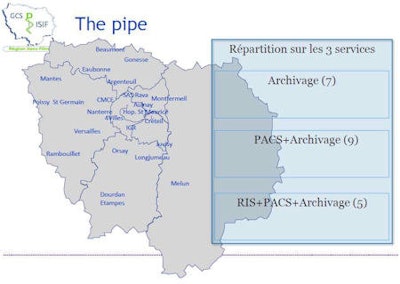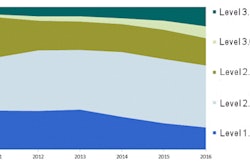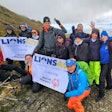
The Région Sans Film (Filmless Region) project is now underway after its launch in 2008 to spur PACS adoption in the greater Paris area. Four hospitals are already utilizing elements of the program's cloud-based RIS, PACS, and archiving platform, with more than 25 additional hospitals scheduled to follow in the next two years.
In addition to providing cost advantages and driving PACS implementation in the Ile-de-France Region, the cloud-based platform for RIS, PACS, and archiving enables new services, such as image sharing with general practitioners and between institutions, as well as on-call teleradiology to radiologists' homes, said Valère Dussaux of Groupement de Coopération Sanitaire pour le Développement des Systèmes d'Information de Santé d'Ile-de-France (GCS D-SISIF), a nonprofit organization that oversees the program and seeks to provide synergies between public and private health facilities in information systems.
"It's much more than a simple experimentation," Dussaux said. "The cloud computing contemporary techniques allowed us to bring the PACS model to a higher service level."
Dussaux and Pierre Boiron, also of GCS D-SISIF, presented the program's experience to date during a session at the 2012 European Congress of Radiology (ECR) in Vienna.
Journey to the cloud
In 2008, the Agence régionale de santé d'Ile-de-France (ARS IF) launched Région Sans Film with the goal of stimulating adoption of PACS in the Ile-de-France, which is the most populous region in France. After a market evaluation concluded it was possible to implement a cloud-based platform that could provide image archiving and true cloud-based PACS services, ARS IF assigned the program to GCS D-SISIF.
In 2010, a consortium led by France Telecom -- Orange and including GE Healthcare won the contract to implement the project. Boiron said that the private cloud platform, run out of two synchronized data centers, offers three types of cloud-based services for hospitals in the region:
- An archive for facilities that already have a RIS and PACS but wish to make use of a cloud-based online archive or long-term archive
- PACS software with an online archive for prefetching, acquisition, and viewing of images
- RIS and PACS software
Each hospital decides what level of service they wish to use and pays the effective costs. Workflow and authorization access has been carefully designed, Dussaux said.
The service-level agreements call for availability 24/7, with a maximum of only six hours of interruption per year, according to Dussaux and Boiron. The first image must also be displayed on the screen of the user less than two seconds after the button is clicked.
Widespread deployment
After successful deployment in 2011 at pilot sites CH Simone Veil (PACS and archiving) and Institut Gustave Roussy (archiving), CHI de Poissy et Saint-Germain-en-Laye (CHIPS) and CH Marc Jacquet (CHMJ) de Melun have both deployed PACS and archiving capability.
An additional five hospitals are in the deployment phase: Centre d'Accueil et de Soins Hospitaliers de Nanterre (RIS, PACS, and archiving); CH Victor Dupouy d'Argenteuil (archiving); CH des 4 Villes de Saint-Cloud (PACS and archiving); CH de Gonesse (PACS and archiving); and CH Robert Ballanger (CHRB) d'Aulnay-sous-Bois (archiving).
Twenty-one more hospitals have also signed on to utilize the platform, and deployment plans call for four hospitals to be added every three months over the next two years, Dussaux said.

More than 1 million examinations representing more than 42 terabytes have already been stored on the platform, including more than 850,000 exams that were imported from the Institut Gustav Roussy's original PACS. The remaining 150,000 are new studies.
Radiologists have also been satisfied with the platform. In a survey of the two pilot sites, radiologists gave the system an average rating of 8/10, Dussaux said.
The cloud platform facilitates services, such as providing general practitioners with access to images produced in hospitals, he said. In addition, users can provide a colleague from another hospital access to an image. Furthermore, radiologists can gain remote access from their homes, Dussaux said.
The model also provides financial benefits, Dussaux added.
"Cloud computing techniques can lead to a new PACS model at significantly lower prices," he said.



















